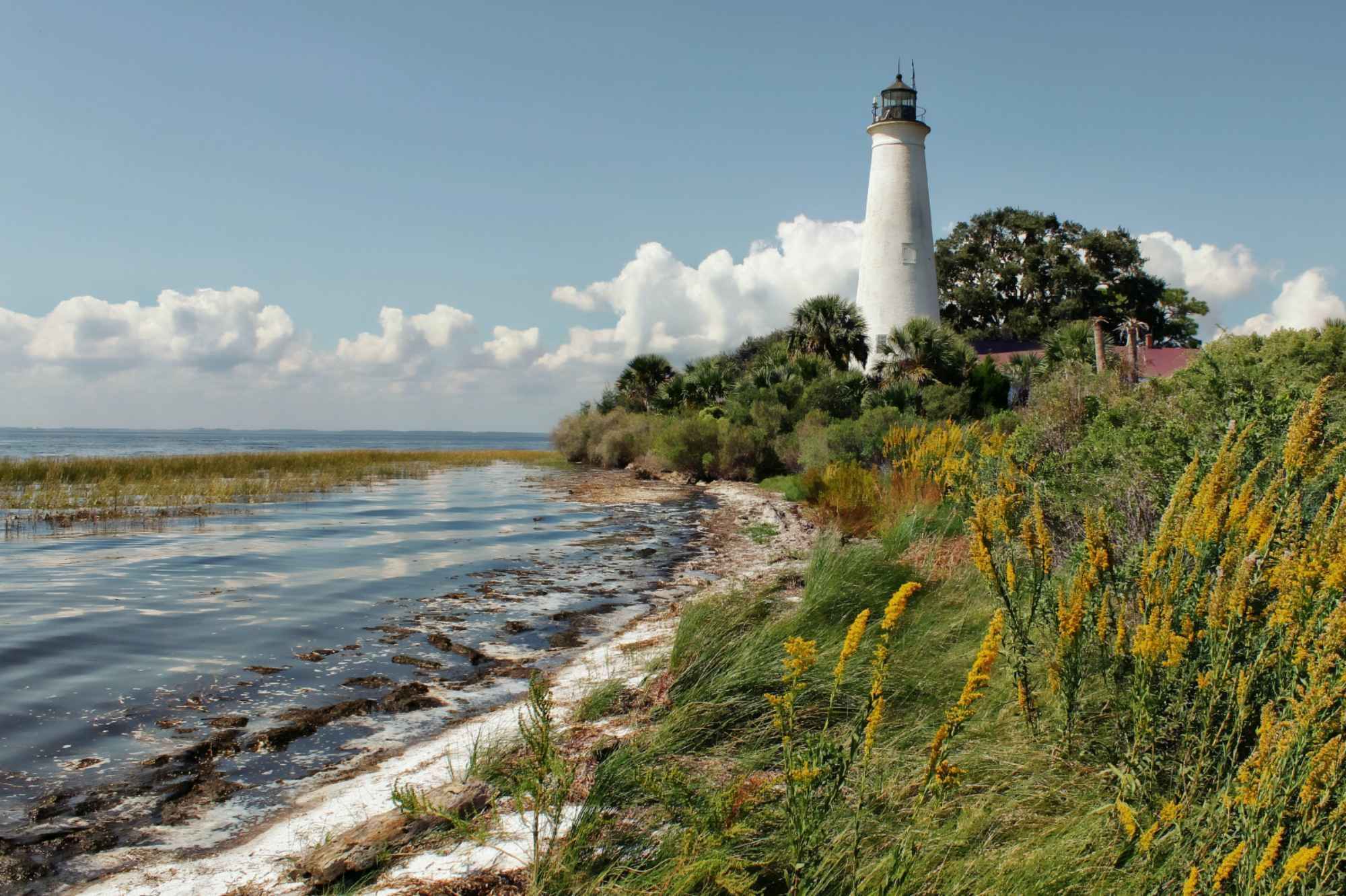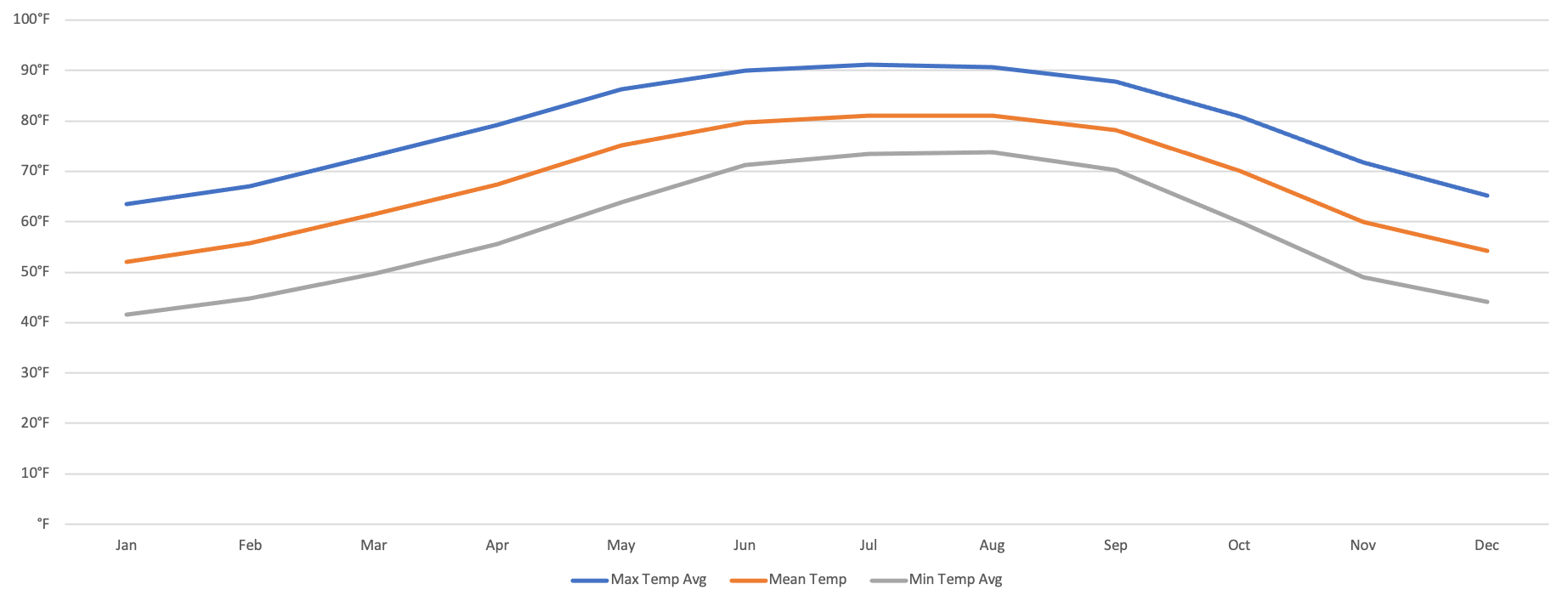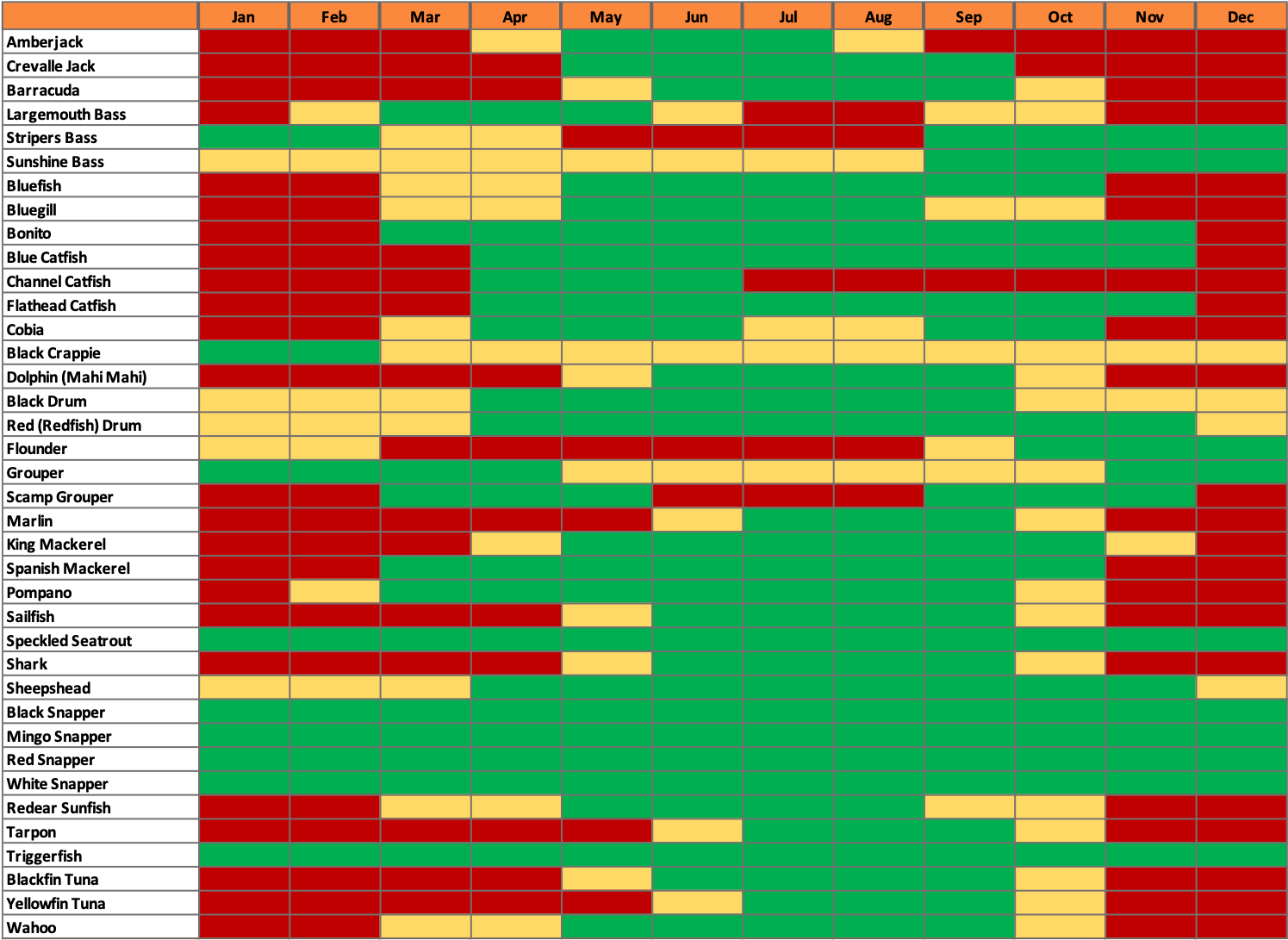Learn about St. Marks, FL Fishing
St. Marks fishing is a year-round endeavor, with redfish and trout biting throughout the entire year, even in the winter months.

Less than 20 miles south of Tallahassee lies St. Marks, Florida, a great escape where anglers can come to experience some of the very best fishing Florida has to offer. St. Marks is on the eastern edge of the "Forgotten Coast," a stretch of coastline on the Florida panhandle that was aptly named by the Apalachicola Bay Chamber of Commerce since it's comparatively quiet, undeveloped, and undisturbed compared to the rest of Florida. With a population of only 300, St. Marks is a modest, historic town with much to offer in nature and the outdoors.

No need to deal with unearthly traffic or unbearably long tourist lines here! Instead, you'll find beauty and solace in the quaint town of St. Marks, with its natural beaches and on the river. Of course, the area is also known for its phenomenal fishing, and it is home to some world-class fishing charters, which makes it a perfect place to vacation.
Two rivers, the Wakulla River and the St. Marks River, sandwich the village of St. Marks itself, and they meet right at the edge of town before continuing their flow into Apalachee Bay and the Gulf of Mexico. This primetime location right on the river banks gives St. Marks the advantage of being right near the fish.
St. Marks Fishing:
The St. Marks fishery is unique for several reasons. First of all, the low local population means this is a low-pressure fishery, with an abundance of hungry fish. Second of all, the abundance of rock sets it apart. In addition, there is an interesting break in bottom structure such that to the west of the river mouth, the bottom of Apalachee Bay is made up of sand, while the bottom east of the river mouth consists of limestone rock. Finally, Apalachee Bay has outflows from four different major systems- not just the St. Marks and Wakulla Rivers, but also the Sopchoppy and Ochlockonee Rivers. The vast number of nearby minor creeks and streams also provide plenty of action to explore for those who have that itch. All the creek and river mouths in the Apalachee Bay area have oyster bars right there as well. So there are plenty of opportunities for you to catch many species of fish using many techniques!
There is one downside to the ever-present limestone rock structures that are all over the flats in Apalachee Bay, though. While some of the rock structures are marked, many are not. As a result, it can be difficult for boaters and fishermen new to the area to navigate safely when operating boats in the bay. Nonetheless, the nearby rock structure is part of what makes St. Marks such a great fishing location for species like speckled trout and redfish.
It can always be smart to hire a professional fishing guide with experience in the local area to make sure you navigate safely and fish the correct techniques in the right spots, especially when fishing in St. Marks. There are some great St. Marks fishing charters, and there's just so much water to cover in the bay that this can pay dividends for both tourists and locals alike!
St. Marks Weather


Top 10 Fish Species in St. Marks
The top 10 fish species you'll catch around St. Marks are redfish, speckled trout, flounder, grouper, snapper, sheepshead, cobia, tarpon, black sea bass, and kingfish.
St. Marks Fishing Tips
Inside the mouth of the St. Marks River or the Wakulla River, before it meets the Bay, one key that fisherman should keep in mind is the oyster bars. The ideal oyster bar to fish is not necessarily the one with the most oysters packed together. Instead, those with the most ambush spots for fish to hide out are usually the most productive. You'll often see experienced charter boat captains taking advantage of this knowledge. Redfish, speckled trout, black drum, and sheepshead all gravitate toward this structure. According to local fishing guides, spoons, spooks, jerkbaits, paddle tail jigs, and shrimp jigs are great lures you can throw when fishing the oyster bars to be sure to catch redfish and trout.
Fishing deeper bars is an excellent way to catch sheepshead or even to find stacked schools of sea trout. If you want to guarantee a catch, you can't go wrong using shrimp as live bait near the rocks and oyster beds. Fiddler crabs are an alternative live bait that you can use to catch redfish and sheepshead. Over by the lighthouse is an excellent opportunity to target flounder bouncing jig heads.
Outside the rivers to the east, there are often schools of redfish that love the tall rock grass that crops up among the many limestone structures. The rock garden is the most famous structure. It's about three miles east of marker seven in the St. Marks channel. It consists of rocks spread across 200 acres, and it is a great habitat for redfish. Again, more good bait and lures for redfish are shrimp, pinfish, spooks, skitter walks, gold spoons, and bucktails. When stalking redfish, it is paramount to be quiet so as not to spook them. Even water lapping on the bow of your boat if you have the wrong hull could be detrimental! This mistake can be common for inexperienced anglers, and it takes a lot to get used to it. It's best to turn off your boat's main engine and use a trolling motor or push poll.
Outside the rivers to the west, during the warmer months of spring and summer, you can drive to the Alligator Point grass flats to target tarpon. Though extremely difficult to hook up with and fight, tarpon are a fantastic game fish you can target with sinking twitch baits or live bait. Tarpon fishing is some of the most exciting fishing there is! For tarpon, finger mullet, menhaden, or threadfin work best, and it's often smart to use a strong leader at least four feet long to prevent the fish from snapping your line. With so many opportunities to catch fish, it's no wonder the inshore charter fishing industry in St. Marks is thriving. However, it's important to note that when you plan on targeting tarpon, you need a special fishing license. If you book a fishing charter, there's a good chance your captain will take care of your license, though.
Apalachee Bay is also home to monster cobia, and you can catch these giant fish close to shore cruising the flats when they're harassing bait. Live pinfish can often yield the most success, so that's always a good bet. Of course, you can always go offshore fishing in the gulf as well.
Most of the fishing in St. Marks is light tackle or fly fishing, making for a fun fight. Flats fishing is especially fun when you have fish blowing up your topwater lures. With such a variety of species available to catch and often keying on the same bait, St. Marks and Apalachee Bay has such a diverse and fun fishery that everyone should experience it if they have the opportunity.
St. Marks Seasonal Fishing
St. Marks fishing is a year-round endeavor, with redfish and trout biting throughout the entire year, even in the winter months. The spring migration of fish means that inshore fishing is in full swing by May, with cold fronts are finally gone. Spring in St. Marks is just a phenomenal time to be on the water, experiencing some of the best fishing in the world. The summer yields the best shot at trophy fish like tarpon and the start of scallop season, which lasts from June to September. It's smart to fish early in the summer to beat the heat. Fishing peaks again in the fall when the heat subsides as vast numbers of sea trout return to the flats and redfish school. When the cold comes in November, migratory fish get pushed south, but on the right good-weather days in the winter, the redfish and trout bites are still world-class in the rivers and creeks. Regardless of what time of year, a fishing trip in St. Marks is tough to beat!
St. Marks Fishing Spots:
- St. Marks River
- Wakulla River
- Apalachee Bay
- Ochlockonee Bay
- Ochlockonee River
- Goose Creek Bay
- Oyster Bay
- Saint George Sound
- Gulf of Mexico
St. Marks Fish Species Seasonality:

Things to do in St. Marks:
1. San Marcos de Apalache Historic State Park

The long and storied history of St. Marks started in 1528 with the arrival of Panfilo de Narvaez of Spain. Throughout history, control over Fort San Marcos de Apalache swapped hands many times, but now it is a beautiful state park.
2. Tallahassee-St. Marks Historic Railroad State Trail
Florida's first railroad, built in 1836, connected Tallahassee and St. Marks. Now the abandoned rail line serves as a popular biking, hiking, jogging, and horseback riding spot!
3. St. Marks Lighthouse
The second oldest lighthouse in Florida, the St. Marks Lighthouse was constructed in 1831. You'll find it on the eastern side of the St. Marks River's mouth. This beautiful piece of architecture, which is one of the most popular photo spots around, is a staple of Apalachee Bay and can be found within the confines of St. Marks National Wildlife Refuge.

St. Marks Beaches:
1. St. Marks National Wildlife Refuge
There are miles of nature trails by the saltwater marshes and freshwater impoundments, perfect for viewing nature, birds, and even alligators. By the lighthouse, there's a small, quiet beach with white sand.
2. Edward Ball Wakulla Springs State Park
Boasting the world's deepest and largest freshwater springs, this is a beautiful location to take in nature and enjoy time with the family. There's a 22 ft dive tower, and the grassy beach is one of the best places to relax in Wakulla County.


